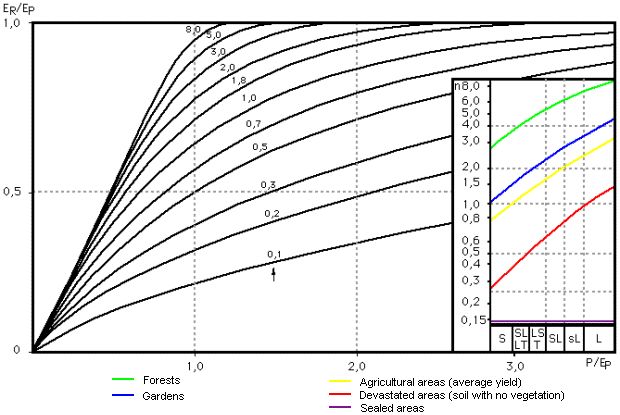Evaporation
Runoff is calculated from the difference between long-term annual mean precipitation and actual evaporation. Actual evaporation, as it actually averages at specific locations and general areas, is calculated from the most important factors of precipitation, heat supply (radiation balance), and the average storage properties of evaporative areas. Potential evaporation is a calculation where the heat supply is replaced by quantities of evaporated water corresponding to the amounts of heat. Sufficient inputs of moisture to evaporating areas allow actual evaporation values to approach potential evaporation values. Actual evaporation is modified additionally by the storage properties of the evaporating area. Greater storage effectiveness, such as a greater cohesive capacity of the soil and greater root depth, causes greater evaporation.
The demonstrated connection between actual evaporation to precipitation, potential evaporation and the evaporation effectiveness of the location is satisfied by the relationship according to Bagrov (cf. Glugla et al. 1971, Glugla et al. 1976, Bamberg et al. 1981 and cf. Fig. 5). The actual evaporation ER for locations and areas not influenced by groundwater can be determined by the Bagrov relationship with knowledge of the climate factors precipitation (P), potential evaporation (EP) (quotient P/EP), the effectivity parameter (n), and the quotient actual evaporation/potential evaporation (ER/EP). The Bagrov process is also used in modified form for calculations where groundwater influences evaporation; the average capillary water inflow from the groundwater is added to precipitation.

